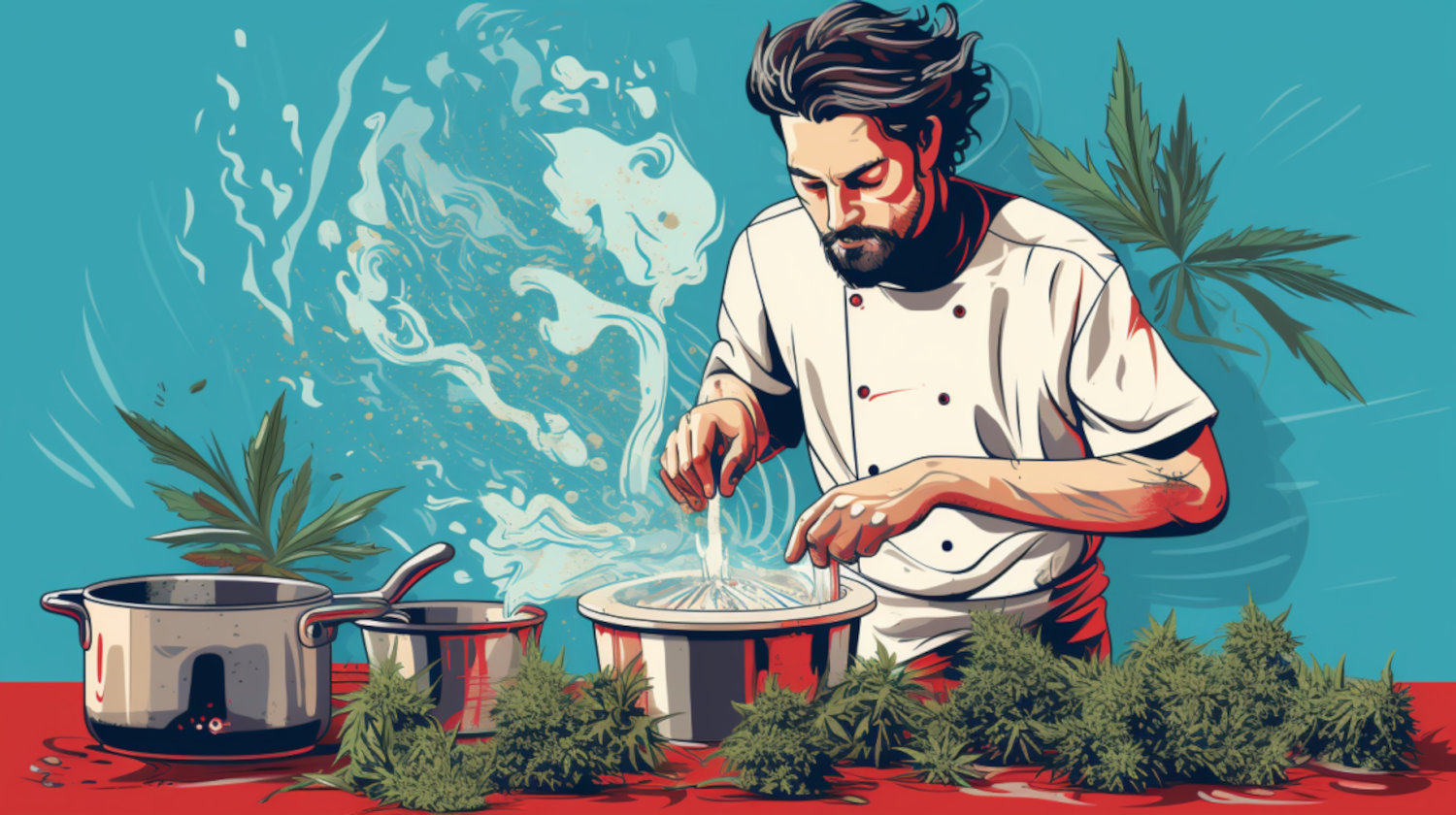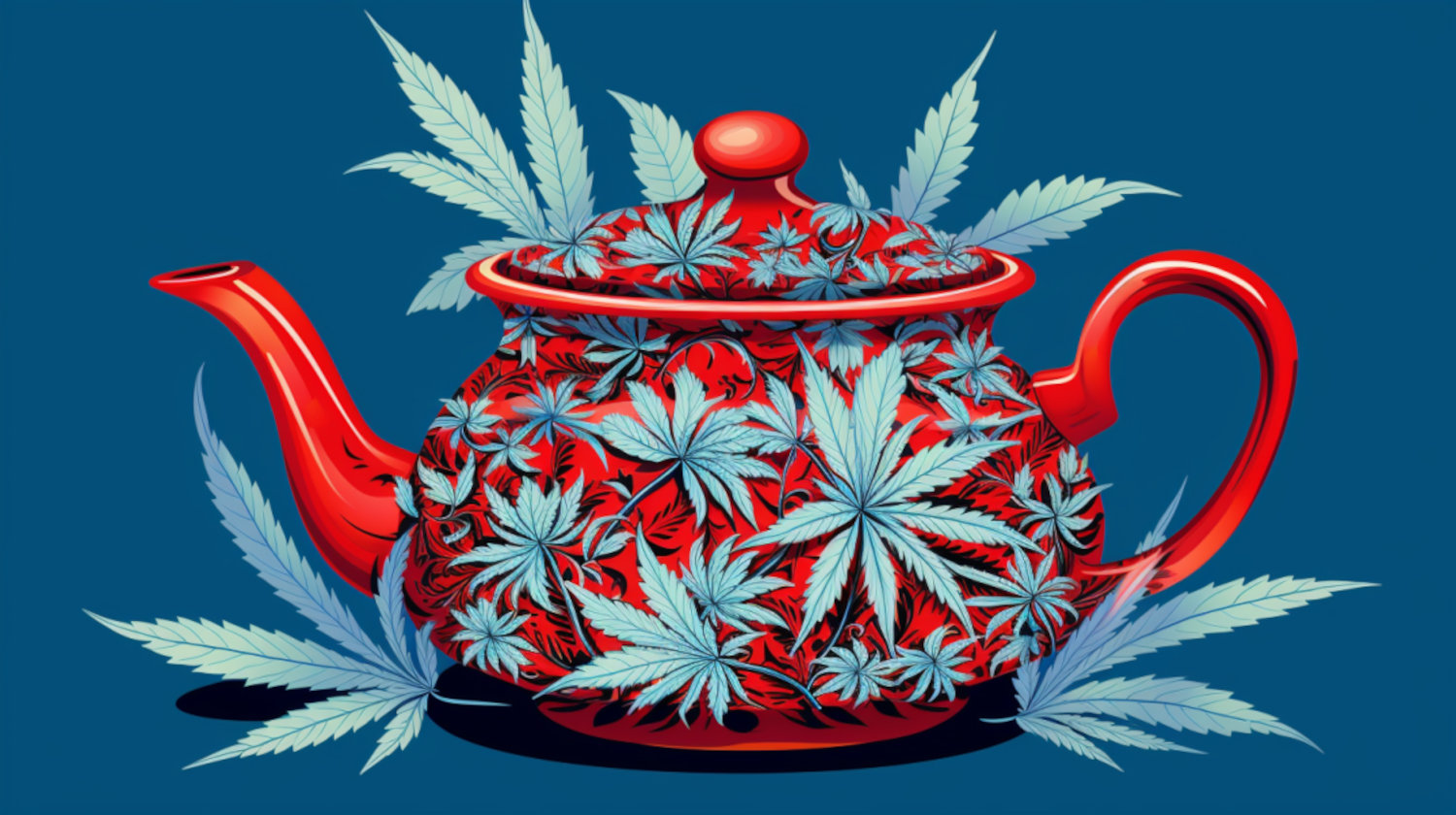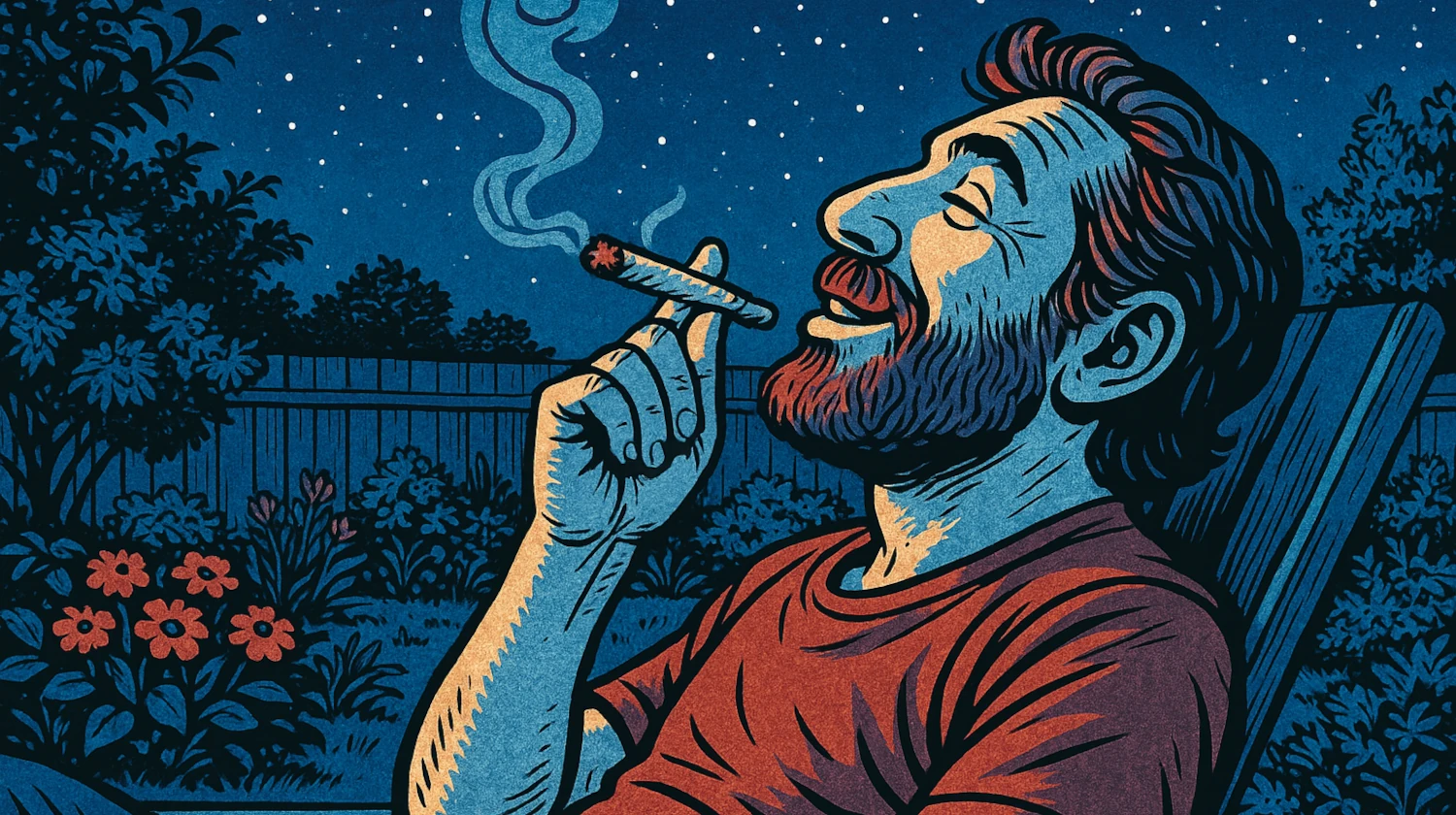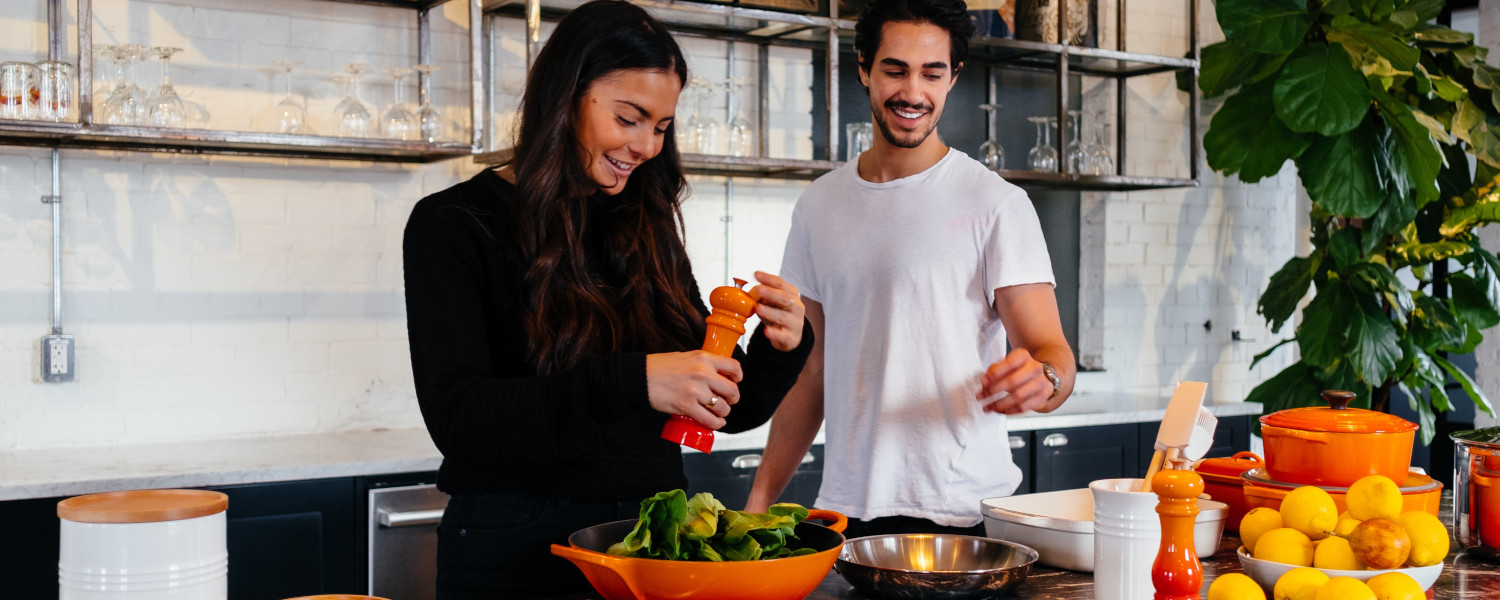In This Article
Key Takeaways
- Cannabis cooking works best when the steps are simple and consistent.
- A low dose and slow pace should help guide the experience while minimizing any overconsumption concerns.
- Strain choice, terpene profiles, and infusion bases shape the experience, making cannabis cooking both creative and technical.
Edibles have quickly become one of the most popular ways to use cannabis, leaving plenty of people wondering how to cook with cannabis. Infusing THC or CBD into your favorite recipes is about as straightforward as it gets.
Cannabis cooking comes down to a couple of basic skills: decarbing and infusing. Once you can decarb, or activate, the cannabis you're a big step toward "elevating" all sorts of recipes. Infusing the decarbed cannabis into a fat, like oil or butter, is the other big step. Since almost all recipes call for a main fat ingredient, you can start to see just how many options there really are.
How to Cook With Weed: The Basics
Most people think of brownies first, but cannabis fits into far more than just dessert. It can bring depth to pizza sauces, add warmth to curries, or even enhance fruity smoothies. The options stretch as far as a cook’s imagination.
No matter the recipe, the steps follow a familiar path.
- First, decarb the flower.
- Then, infuse a fat, like oil, butter, or milk.
- Next, blend that fat into a dish when the recipe calls for it.
- Finally, portion and serve in manageable doses.
Success in cannabis cooking comes from nailing these fundamentals. As confidence builds, the recipes can become more complex and layered.
What You Need to Cook With Cannabis
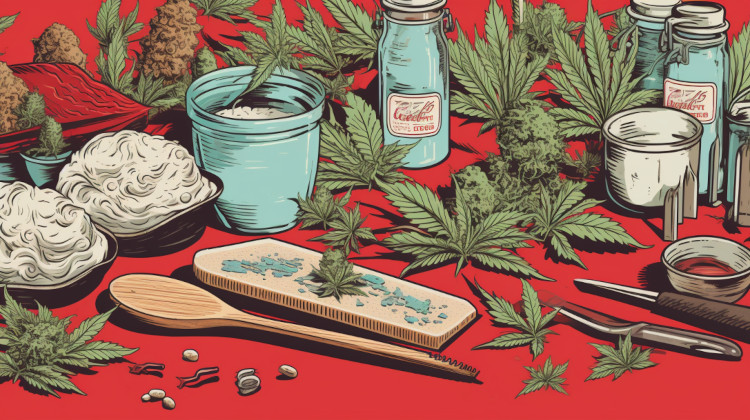
A few tools make the job much smoother. They include:
- Airtight containers (ideally UV-protected)
- Baking sheet
- Cheesecloth
- Fine mesh strainer
- Labeling materials
- Measuring spoons
- Oven mitt or handles
- Parchment paper
- Scale
- Thermometer
Depending on the kitchen equipment available, some of the essential devices may include:
- Double boiler
- Slow cooker
- Small pot
- Sous vide (Preferred for steady infusions)
Cooking With THC vs CBD
Various plant compounds deliver different expected outcomes. That statement is no clearer than when comparing THC and CBD, cannabis’s two most prevalent cannabinoids.
THC is the cannabinoid most known for its noticeable, intoxicating, and heady experience. CBD, on the other hand, is known for producing a more grounded, mellow, non-intoxicating experience.
Some believe that using THC and CBD together may create a more balanced result. This idea is called the “entourage effect.” However, not everyone feels the same way. In some cases, especially with edibles, CBD may make the effects stronger, not milder.
The outcome depends on many factors, including the dose, the product, and how each person’s body reacts. Because of this, it’s safest to try a small amount first and see how it feels.
Keep in mind that the consumption method affects the outcome. For example, edibles will take longer to take effect, often between 15 and 120 minutes, depending on the product formulation. Once they do take effect, the experience can last much longer than smoking or vaping. In some cases, effects can last for more than six hours.
Since everyone’s metabolism is unique, one person’s cannabis experience won’t always match another’s. As such, it’s recommended to start at a low dose, and to wait at least 60 minutes between a possible second dose. Remember, slow and steady is always the best approach when seeking the ideal outcome.
Picking the Right Strains and Recipes
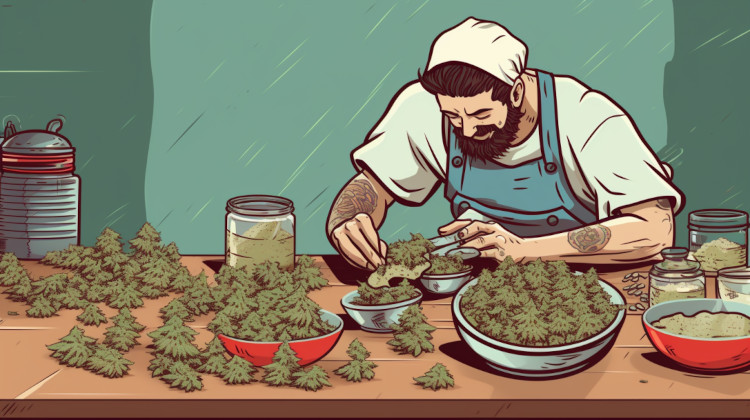
Choosing a strain can be as simple as going with a top seller, or as deliberate as pairing terpene profiles with specific flavors, aromas, and expected outcomes.
Flavor is often the deciding factor, with many choosing to pair their recipes with similar strain profiles. For example:
- Citrus-forward cultivars can pop in fruity and sweet desserts.
- Earthy, piney strains work well with hearty bases and sides, like roasted vegetables or sauce.
Terpenes play a major role in shaping cannabis flavor. They are the natural compounds that give cannabis its aroma and character. More than 150 terpenes have been identified in cannabis so far.
Limonene brings citrus notes, myrcene leans earthy, and pinene adds a bright herbal lift. But it isn’t as straightforward as adding in the right terps. In some cases, the aroma fades when heated. Potency tends to shift as the flower ages, which can impact freshness and aroma.
In short, there’s a lot to consider when trying to precisely pair cannabis with an ideal recipe.
Decarbing Cannabis
Raw cannabis holds cannabinoids in an acidic form called THCA, which does not create the intoxicating high associated with THC.
Decarboxylation is a process that activates the THCA, converting the compound into THC through a gentle heating process. A few methods can do the job, and is typically determined by the consumption method.
When cannabis is smoked or vaped, this activation happens instantly when lit or heated. For edibles, the process needs to be done in advance.
A common approach is to spread ground or broken flower on a lined baking sheet and warm it in the oven. As the buds heat, the color shifts to a deeper green. If the flower turns brown it may lose quality and potency.
Exact figures vary by producer, but a commonly cited temperature range tends to look like 220°F (104°C) and 240°F (115°C). Consider using a thermometer to reach and maintain that ideal temperature.
Heads up: The smell can be strong when decarbing. Be careful if in a space where cannabis is not tolerated. The aroma is often compared to the scent of a heavy smoke session.
Choosing a Base Ingredient to Infuse
Consider the recipe and what ingredients will interact with the cannabis. Cannabinoids bind to fat, making butter, oils, and dairy ideal bases:
- Butter is especially popular in classic edibles like cookies and brownies for its rich flavor and reliable texture.
- Neutral oils blend smoothly into items like dressings and no-bake snacks.
- Coconut oil brings a creamy texture and gentle sweetness, making it a favorite for vegan baking and flavorful curries.
No matter the base, keep temps low and steady for a smooth infusion.
Infusing Your Base Ingredient
This part is going to change a little here and there based on the fat you're infusing and the recipe, but the general idea is going to stay the same. THC and CBD are both drawn to and only dissolve in fats. That's why fats make the ideal base ingredients for infusion. So, infusion essentially comes to steeping your decarbed cannabis in the fat of choice on a low temperature long enough for it to draw out the THC and/or CBD.
For instance, to infuse olive oil, all you need to do is:
- Heat olive oil in a double boiler or a saucepan at 160-180°F (70-80°C) until it's evenly heated.
- Add your ground, decarbed cannabis flower and stir.
- Keep the oil at between 160-180°F (70-80°C) for 30-40 minutes, stirring occasionally.
- Take the pan off heat, and let it cool for a little while. It's better if the oil is still warm when straining.
- Strain the oil through a stainless steel strainer or cheesecloth to remove the cannabis bits. You can strain it directly into a Mason jar for storage or into a bowl for the next step in your recipe.
That's all there really is to it! This process will vary slightly for butters, milks, and other fats, but once you're comfortable with the base idea, the possibilities are wide open.
How to Calculate the Dose
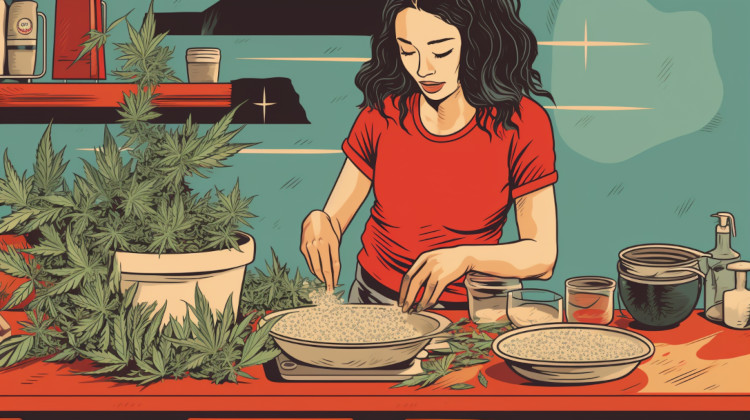
Dosing begins with three numbers: the potency of the cannabis, the amount of decarbed flower used, and the volume of infused fat.
From there, divide the total cannabinoids by the total volume of the infusion. This gives an estimate of potency per teaspoon or tablespoon. Of course, if you'd rather use a calculator, those can be a helpful way of checking your math.
Once the math is complete, portion the recipe evenly and label the container with a clear dosage range.
Choosing the right dose is highly individual. Most commercial edibles portion their products at about 10mg per dose. For many beginners, this is way too much, so starting with a half or quarter of that might be a better fit. If you're not sure of the right dose or would just like some guidance, talking to your doctor is always the best bet.
Adding Cannabis to Existing Recipes
Inserting infused butter, oil, or dairy into recipes is one of the simplest ways to cook with cannabis. The idea is straightforward: replace some of the fat in the recipe with an infused version and maintain gentle heat.
Beyond sweets, infusions work well in everyday meals. A spoonful of infused butter can finish vegetables, melt over pasta, or brighten mashed potatoes. An infused olive oil blends into dressings, marinades, or slow-simmered sauces. Coconut oil adds richness to curries, stir-fries, and oatmeal, while infused cream or milk can turn up coffee, hot chocolate, or soups.
Most baked goods can handle a direct swap, though many cooks use only part infused fat to keep flavors balanced.
For smooth results, stir the infusion before measuring so it mixes evenly. Stick with low stovetop heat or steady oven temperatures to protect potency and flavor. Slow cooking usually preserves more than quick searing. And when frying, save infused oil as a finishing drizzle instead of using it in the pan.
No matter the dish, the essentials stay the same. Gentle heat, even mixing, and careful portioning help keep every serving consistent.
Storing Homemade Edibles
Let edibles cool fully before storing, but avoid leaving them out for too long. Air, light, and heat can all dull potency, flavor, and expire sooner than usual.
For best results, use airtight containers and place them in a dark cupboard or fridge. For extended storage, wrap portions in freeze wrap before placing them in the freezer. When ready to consume, thaw slowly.
Clear labels avoid mix-ups later. Always mark containers with the infusion type, estimated dose, and date the edible was made. And, always keep edibles away from kids, pets, and anyone who shouldn’t have cannabis.
The information in this article and any included images or charts are for educational purposes only. This information is neither a substitute for, nor does it replace, professional legal advice or medical advice, diagnosis, or treatment. If you have any concerns or questions about laws, regulations, or your health, you should always consult with an attorney, physician or other licensed professional.

